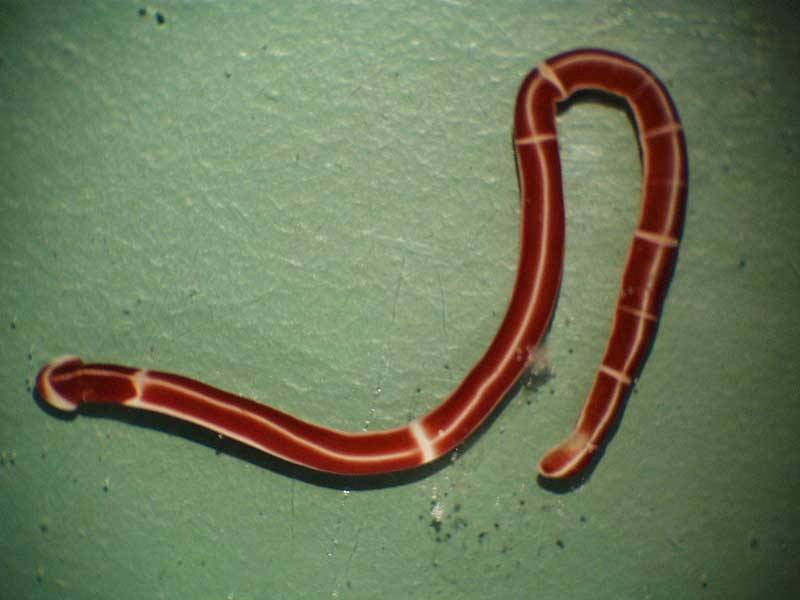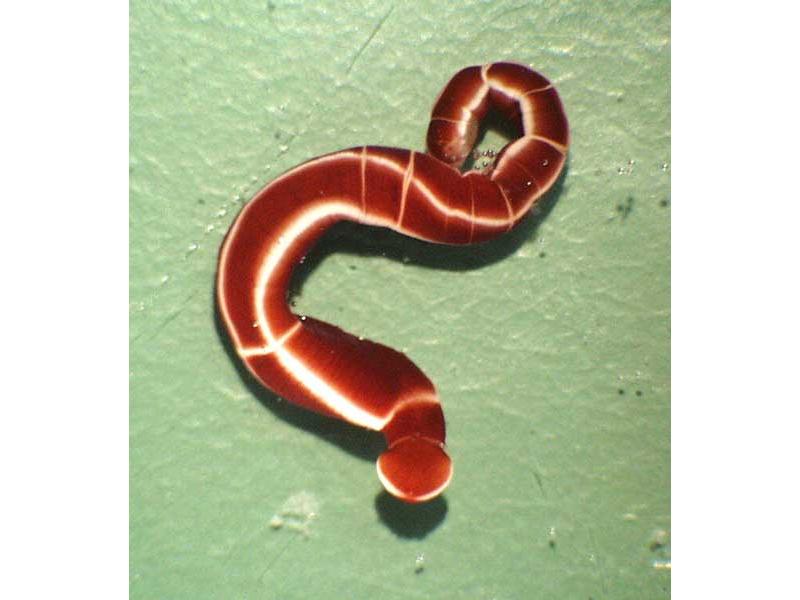Football jersey worm (Tubulanus annulatus)
Distribution data supplied by the Ocean Biodiversity Information System (OBIS). To interrogate UK data visit the NBN Atlas.Map Help
| Researched by | Judith Oakley | Refereed by | Admin |
| Authority | (Montagu, 1804) | ||
| Other common names | - | Synonyms | - |
Summary
Description
Recorded distribution in Britain and Ireland
Recorded along the south west and west coast of England, Wales, Ireland and Scotland and the Isle of Man, with records from the Shetland Islands, the Orkney Islands, the Moray Firth, Firth of Forth, the Wash, and off Bognor Regis.Global distribution
Found from the Pacific coast of North America eastwards to the Atlantic, North Sea and Mediterranean coasts of Europe.Habitat
Tubulanus annulatus is found sublittorally on a wide variety of substrata at depths of up to 40 m or more. It secretes a silken mucous tube, which is often found covered with sediment particles. This species is sometimes found intertidally beneath stones, amongst Laminaria holdfasts or on sand or mud near low water level.Depth range
-Identifying features
- Ventral surface paler than dorsal.
- Up to 50 transverse white rings.
- Three longitudinal white stripes (mid-dorsal and two lateral).
- The mid-dorsal stripe extends on to the head and terminates at a transverse white band bordering the tip of the snout.
- The two lateral stripes do not reach the head but run posteriorly from the first white ring encircling the body.
- Broad and rounded head with colour and pattern like that of body.
- Body unsegmented and ciliated.
- Separate mouth and anus.
Additional information
The Phylum Nemertea comprises approximately 900 species of elongated, often flattened worms called ribbon worms. They range in length from a few millimetres to up to 30 m and are capable of extreme contraction and elongation. Nemerteans do not possess a distinct head. The classification of the Nemertea is based on internal morphology. Most are benthic marine animals but there are some deep water pelagic species.Listed by
- none -
Bibliography
Bruce, J.R., Colman, J.S. & Jones, N.S., 1963. Marine fauna of the Isle of Man. Liverpool: Liverpool University Press.
Crothers, J.H. (ed.), 1966. Dale Fort Marine Fauna. London: Field Studies Council.
Gibson, R., 1982. British Nemerteans. Cambridge: Cambridge University Press
Hayward, P.J. & Ryland, J.S. 1994. The marine fauna of the British Isles and north-west Europe. Volume 1. Introduction and Protozoans to Arthropods. Oxford: Clarendon Press.
Howson, C.M. & Picton, B.E., 1997. The species directory of the marine fauna and flora of the British Isles and surrounding seas. Belfast: Ulster Museum. [Ulster Museum publication, no. 276.]
JNCC (Joint Nature Conservation Committee), 1999. Marine Environment Resource Mapping And Information Database (MERMAID): Marine Nature Conservation Review Survey Database. [on-line] http://www.jncc.gov.uk/mermaid
Picton, B.E. & Costello, M.J., 1998. BioMar biotope viewer: a guide to marine habitats, fauna and flora of Britain and Ireland. [CD-ROM] Environmental Sciences Unit, Trinity College, Dublin.
Datasets
Centre for Environmental Data and Recording, 2018. Ulster Museum Marine Surveys of Northern Ireland Coastal Waters. Occurrence dataset https://www.nmni.com/CEDaR/CEDaR-Centre-for-Environmental-Data-and-Recording.aspx accessed via NBNAtlas.org on 2018-09-25.
Fenwick, 2018. Aphotomarine. Occurrence dataset http://www.aphotomarine.com/index.html Accessed via NBNAtlas.org on 2018-10-01
Kent Wildlife Trust, 2018. Kent Wildlife Trust Shoresearch Intertidal Survey 2004 onwards. Occurrence dataset: https://www.kentwildlifetrust.org.uk/ accessed via NBNAtlas.org on 2018-10-01.
Manx Biological Recording Partnership, 2022. Isle of Man historical wildlife records 1990 to 1994. Occurrence dataset:https://doi.org/10.15468/aru16v accessed via GBIF.org on 2024-09-27.
NBN (National Biodiversity Network) Atlas. Available from: https://www.nbnatlas.org.
OBIS (Ocean Biodiversity Information System), 2025. Global map of species distribution using gridded data. Available from: Ocean Biogeographic Information System. www.iobis.org. Accessed: 2025-08-08
Citation
This review can be cited as:
Last Updated: 17/04/2008




